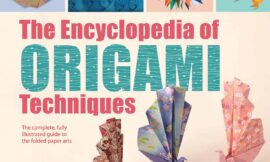
Set in the green and gently rolling countryside of Southeast England just inside the border of the county of East Sussex sits the ancient village of Bodiam. This small community, which boasts a restaurant, public house and a 12th Century church, is similar to many other old English villages save for one major feature – the castle to which the village gives its name, Bodiam Castle.
Built in 1385, Bodiam Castle was designed to serve as both a home and a defensive facility and is one of the finest late-medieval castles in Britain. It is quadrangular in shape with its corners and entrance marked by towers. The entrance also has one of the finest existing examples of a wooden portcullis in Britain. The castle has no keep so its living quarters, intended to house the family, its retinue and garrison, comprised chambers built around the inside of the walls and the courtyard. The whole is bounded by a wide moat and so set in the surrounding landscape as to instil awe and surprise into any hostile force moving into the area. But, despite its age and impressive structure that evokes romantic images of knights in shining armour and medieval battles, Bodiam Castle’s history is hardly the stuff that legends are made of.
The site was first mentioned in 1086 in the Domesday Book, which mentions a Saxon manor house owned by the de Bodeham family. They had owned the estates since the time William’s conquest in 1066 when the Count of Eu, one of William’s kinsmen, had been given them. He handed them down to his son, who took the name de Bodeham from the old Saxon name for the site. In 1378, the estates passed to Sir Edward Dalyngrigge, a member of an old, established Sussex family from a place now known as Dalling Ridge near East Grinstead, following his marriage to Elizabeth Wardeux, whose family had acquired them through marriage to the de Bodehams.
Dalyngrigge had gained wealth and risen to prominence as a result of his service in the Hundred Years War under the command of Robert Knowles, a commander of the so-called “Free Companies”, more-or-less professional soldiers that caused widespread destruction and havoc in France, not always with the blessing of the King. He was a very powerful man locally, and seemingly somewhat fiery. In 1384 for example, Richard II’s uncle, John of Gaunt (who was unpopular and resented in Sussex) took Dalyngrigge to court for trespassing and hunting on his newly acquired Sussex estates. During the trial, Dalyngrigge went so far as to challenge John of Gaunt to combat. The case eventually went against him but he seems to have suffered minimal penalties.
At this time, there was a serious threat of French invasion and French raids along the English coast were common (both Winchelsea – just 14 miles downriver from Bodiam on the River Rother – and Rye were sacked in 1377) as piracy became rife. In 1380, Dalyngrigge was appointed by Richard II to survey Winchelsea and advise how it could be fortified and then, in 1385, in the wake of an attack on nearby Hastings, he was given leave by the king to fortify his home as a measure to help counter a possible French invasion.
Dalyngrigge chose to build a new home instead and this became what we now know as Bodiam Castle, Bodiam being one of a number of local estates to be rebuilt or fortified to defend against likely invaders. He passed the estate to his son, Sir John Dalyngrigge, following his death in 1395. The castle remained in the hands of the Dalyngrigge family until 1483 when it passed to Sir Thomas Lewknor of Trotton. This was near the end of the Wars of the Roses (1455 to 1485). That year Lewknor, a supporter of the House of Lancaster, forfeited the castle and estates to the then king, Richard III of the House of York, who had ordered his followers to besiege the castle, which was actually surrendered without a struggle.
With Richard’s defeat at Bosworth in 1485, Henry Tudor of the House of Lancaster ascended the throne to become Henry VII. BY later marrying Elizabeth of York, Henry reunited the Houses of Lancaster and York so ending the Wars of the Roses. Full possession of Bodiam Castle was eventually restored to the Lewknor family.
Some time later, another prominent Sussex family, the Levetts, held at least a share in Bodiam Castle but, in 1620, John Levett had to sell the family interest in the castle due to indebtedness. By 1639 the castle and the manor were in the hands of Sir John Hufton (some sources say Tufton), 2nd Earl of Thanet. At this time England was consumed by Civil War. Although the castle itself was to play no role in the war, Hufton was a staunch Royalist and, in 1644, had to sell it to help pay fines levied by Parliament. The buyer was one Sir Nathan Powell, a Parliamentary supporter.
In 1722, Sir Thomas Webster, of Battle Abbey, purchased the castle. But apart from a brief period of occupancy in the 18th Century, it was left empty and so began to fall into disrepair. Around 1828, one of Sir Thomas’s descendants, Sir Godfrey Webster, sold the castle for £3,000 to a local squire by the name of John Fuller, a long time Member of Parliament. Nicknamed “Mad Jack”, Fuller was popular locally because he treated the poor well and had found work for unemployed soldiers returning from the Napoleonic Wars. He was also a particularly unruly character who was ejected from Parliament on a number of occasions because of his behaviour. But, it was his purchase that saved Bodiam Castle from planned destruction.
The castle was to change hands again in 1864 when Fuller’s grandson sold it to George Cubitt, Baron Ashcombe, for £5,000. Over the next 40 years, Cubitt, whose father was a prominent London property developer and builder, carried out repairs and restoration. On his death in 1917, the castle was purchased by Lord Curzon, former Viceroy of India. Who continued the restoration work aided by architect William Weir.
Curzon researched Bodiam’s history and published a book of his findings, “Bodiam Castle”. When he died in 1925, he bequeathed the castle to the National Trust, which continued the restoration and now maintains the castle.
Bodiam Castle may not be as big as castles like Dover or Arundel and it may not have had the military significance of those at places like Conway and Caenarfon, but it is a magnificent little gem and is rightly one of the most popular castles with visitors to Britain.



